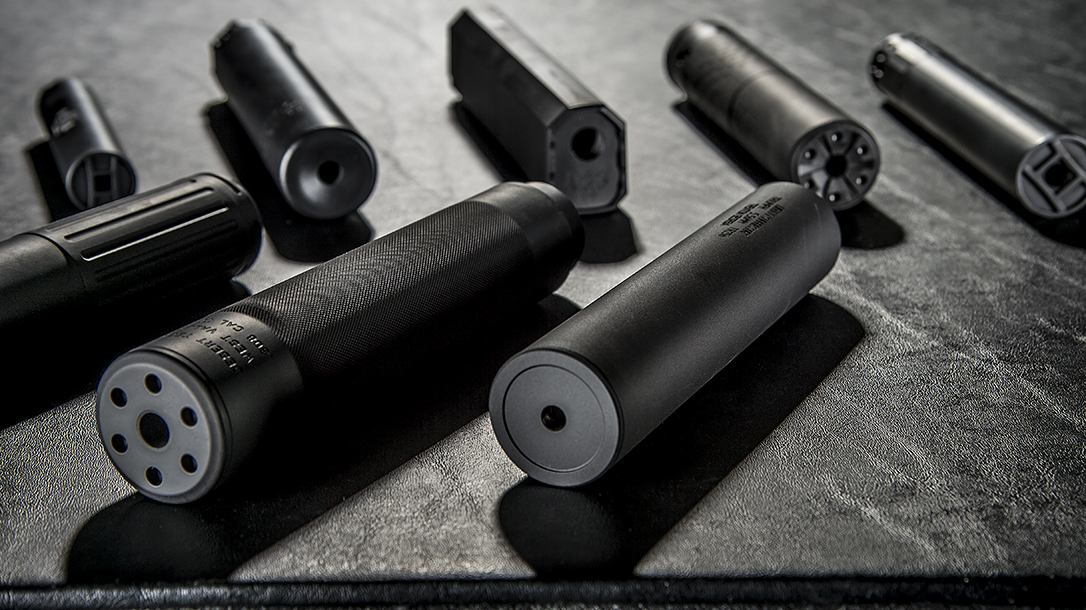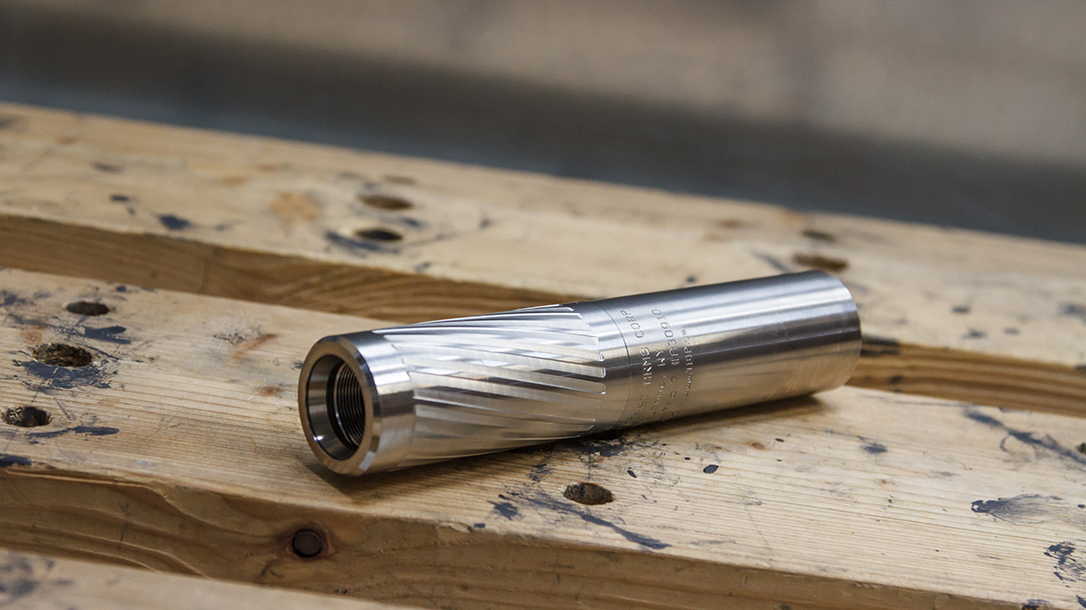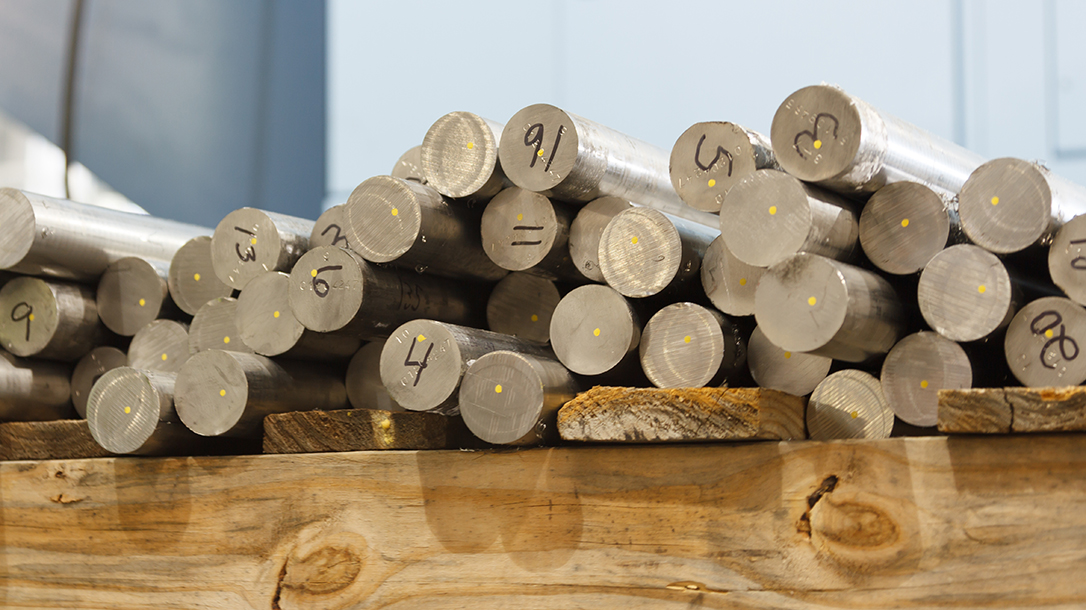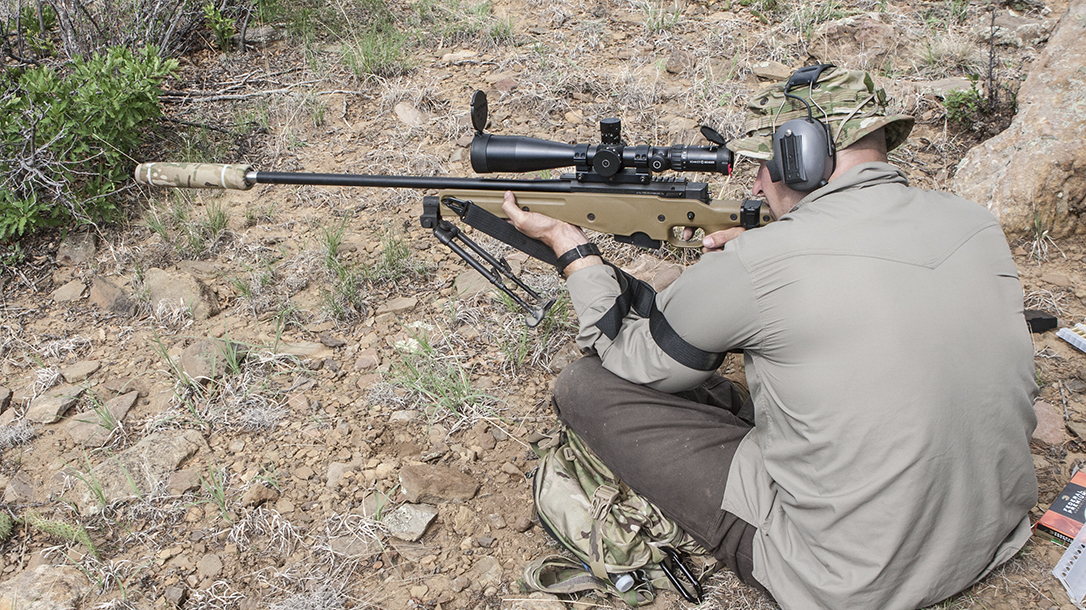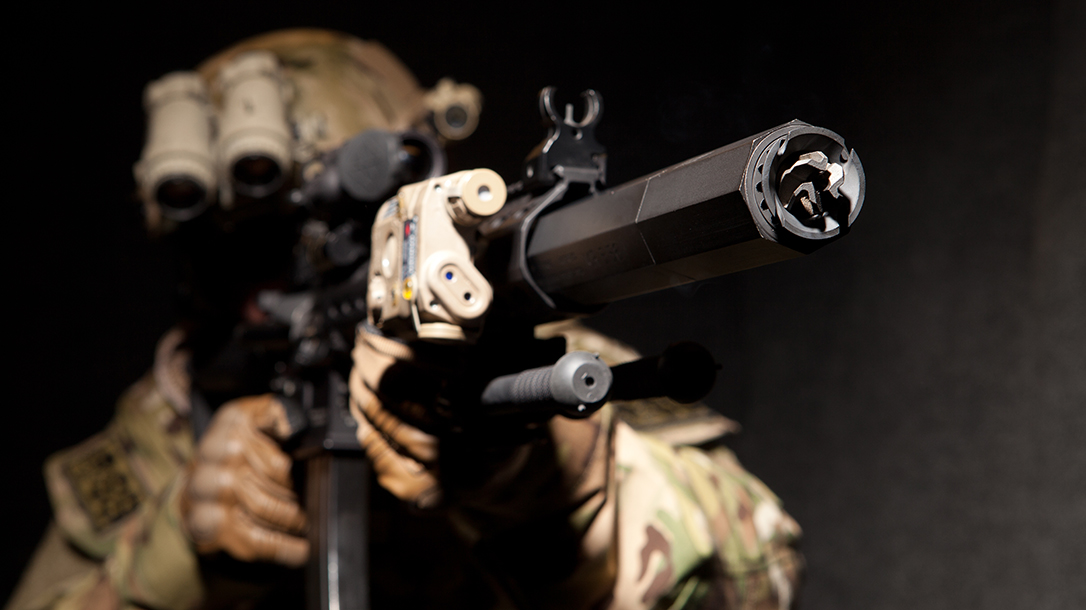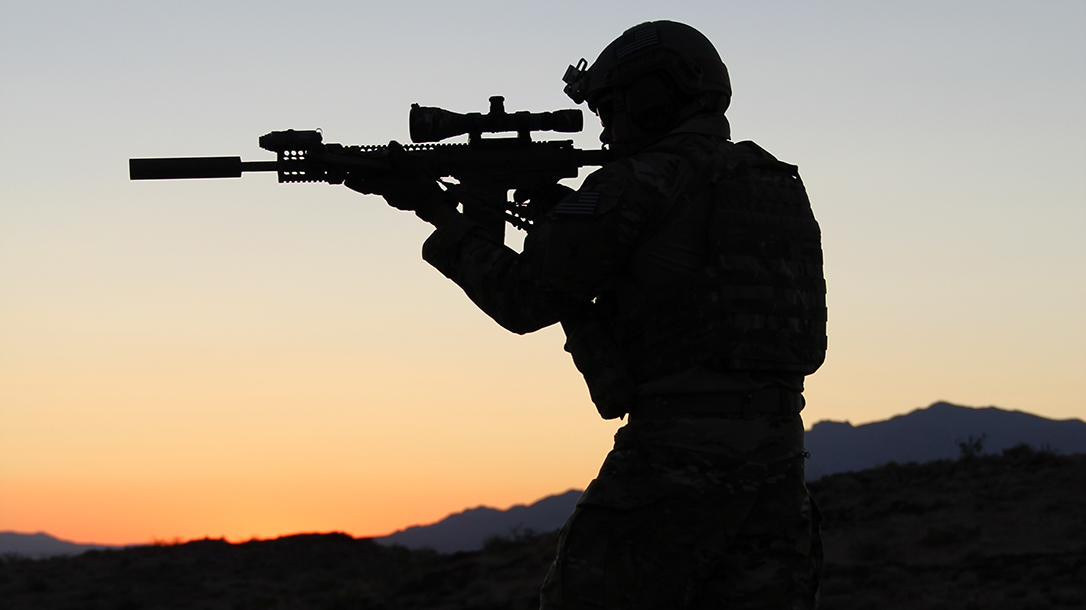The growth of the firearm suppressors over the past decade has been one of the biggest success stories in the gun industry. Though this growth has seen the ups and downs normal to most businesses—some politically driven and some self-inflicted—the number of suppressors on the NFA registry has more than doubled in the past few years.
Thunder Beast Arms Corporation (TBAC) of Cheyenne, Wyoming, is one of the leaders in firearm suppressors. TBAC makes what are universally regarded as the go-to suppressors for high-end precision rifles. This makes sense, as the company’s owners are tremendously skilled and accomplished precision rifle shooters. Additionally, they comprise three of the smartest guys I’ve met in the gun business.
Advertisement — Continue Reading Below
Firearm Suppressors: Always Improving
As I’ve watched TBAC and gotten to know its crew during the past decade, I’ve seen the company’s products continually progress in terms of performance and quality. New products benefit from this perpetual movement, and existing products are often eligible for upgrades at what I’ve found to be reasonable costs. When the company released the Ultra line of suppressors, my older model 30BA went back to Cheyenne to be upgraded with the new Ultra internals, resulting in reduced weight, improved suppression and compatibility with the newer Compact Brake.
This focus on precision and continual improvement has bled into other suppressor lines. Though the newer 22 Take Down is TBAC’s current top-of-the-line rimfire suppressor, the company’s older 22L-1 has served me well for many years and many thousands of rounds of plinking and hunting. All of my children, and several of the children from our church, fired their first shots through that little suppressor.
When we started putting Stealth magazine together, I immediately wanted to include a write-up on how suppressors are made. Thankfully, my friends at TBAC let us take an up-close look at the parts and processes that go into it. Along the way, I also saw a few new things that will debut soon.
Advertisement — Continue Reading Below
Road Trip
Before leaving Cheyenne on our way to elk camp, Shane Coppinger and I spent a morning at TBAC’s manufacturing facility. We went through the process of making a suppressor from raw material to finished can. Coppinger is the president of TBAC and a retired U.S. Navy veteran with 24 years of service to our nation. He shot on the Navy rifle team, and though he is far from one to show off, I’ve seen his impressive collection of trophies and awards. I’ve also seen him pull up to the 1,000-yard line at the NRA Whittington Center after driving from Wyoming, retrieve his .260 Remington match rifle, a loaded magazine and a rear bag out of his truck, lie down in the gravel and shoot a 3.5-inch five-shot group with no warmup, wind flags or sighting rounds. The guy knows his way around a rifle.
TBAC specializes in titanium rifle suppressors. Stainless steel models are also available for use in extreme roles, such as on full-auto short-barreled rifles. In both cases, the company receives, inspects, sorts and often rejects raw material. TBAC utilizes materials that meet rigorous standards. During my visit, the company was cutting titanium tubes from raw stock into slightly oversized sections that would become engraved and serialized outer tubes.
Making Firearm Suppressors
With the tubes cut and measured using gauge tools to determine the inside diameter to 0.001 inches, a five-axis CNC machine produces the internal components of the suppressor from a solid bar of titanium. Ultra-5 model suppressors were running during my visit, but parts can be run in any order. Because the complete internals are run for each suppressor, TBAC can be flexible in production scheduling. A machine operator inputs the number of each model and keeps the bar feeder loaded. The machine does the rest, spitting out completed baffle stacks ready to be welded into a core.
Advertisement — Continue Reading Below
I’m not a manufacturing guy, but I’ve been involved with firearms and accessories manufacturing for more than a decade, and that was one of the coolest parts of my visit. It makes sense and streamlines the manufacturing process, especially given the legal requirements surrounding suppressor components and the need to maintain strict inventory control. With the expansion chamber and baffles for one suppressor machined together, there’s no need to keep individual baffles in inventory.
After the machined internals are complete and assembled, they move to welding. Every internal component is also fully circumferentially welded. TBAC uses proprietary technology and equipment to do this. I couldn’t photograph the equipment used in this step, but the results are impressive and extremely consistent. Then, after the baffle stack is welded, it goes through another series of tests before being approved for completion. Dimensions are verified, surfaces inspected and everything is made perfect before the core can be pressed into a tube. When the core is pressed into the tube, final measurements are taken. Then the tube is trimmed to the exact length required for a perfect fit with the end cap. The end cap is welded in place to finish the assembly.
Finishing Touches
After the suppressor is assembled and fully welded, the unmarked can goes to another CNC machine for engraving and fluting. There, the suppressor must be trued between centers, much like a gunsmith must true a rifle barrel before reaming the chamber to ensure concentricity. If the suppressor is not turning true on the machine, the fluting will have varying widths and spacing. The near-side flutes will be deeper and closer than the far-side flutes. The fluting gives a distinct look and provides a positive gripping surface for installation and removal. Required markings like the model name and caliber designation are also engraved during this setup. This final step completes the suppressor.
Advertisement — Continue Reading Below
With only a handful of exceptions, most customers want a durable finish on firearm suppressors to prevent oxidation. As such, TBAC uses Cerakote C-Series high-temperature finishes. After engraving, TBAC takes each suppressor to the finishing shop for blasting. TBAC fixes suppressors on heavy dowels with dummy muzzle brakes or threads depending on the attachment style of the suppressor. Then technicians insert the heavy dowel into a simple but utilitarian holding fixture. Here, the finishing technician can evenly coat all of the surfaces with Cerakote. Thunder Beast packages and moves suppressors into the vault for storage following curing. Absurd legal hurdles remain before the suppressor is ready to ship.
Beyond Firearm Suppressors
Along with suppressor production, TBAC manufactures its suppressor mounts in-house. Current TBAC model suppressors use a direct-thread-style attachment system, in which the female end of the suppressor threads onto the end of a rifle barrel with corresponding male threads. Also, most 5.56mm and similar barrels have 1/2×28-tpi threading. Further, most 6mm and .30-caliber barrels sport 5/8×24-tpi threading. TBAC’s Compact Brake Mount is an effective and attractive mount in the thread-over-muzzle-brake style. This lets shooters who own one suppressor equip multiple rifles with flash suppressors or muzzle brakes. Moreover, they can simply swap the suppressor to the rifle selected.
A cool-looking and highly effective brake or flash suppressor is much more appealing than bare muzzle threads if you want to shoot a rifle without the suppressor. This comes in handy when I use my MagnetoSpeed chronograph, for example. Remember when I said there would be new product announcements coming soon? Keep your eye out for a new mounting option from TBAC in the near future.
Advertisement — Continue Reading Below
Though the technology is similar to Hiram Maxim’s original design and theory of 100 years past, modern firearm suppressors are leaps ahead of those available just a few years ago. Also, with lower sound levels, increased consistency, lighter weight, reduced flash, reduced point-of-impact shifts and vastly more secure and versatile mounting options, today’s suppressors are precision instruments that are must-haves for modern enthusiasts, tacticians and hunters. The suppressors from Thunder Beast Arms Corp. are among the best in the industry. Moreover, they deserve consideration from any rifleman looking to reduce their sound and signature. As such, these suppressors will improve the performance of their match, tactical or hunting rifle.
Thunder Beast Arms Firearm Suppressors
- Ultra-9
- Ultra-7
- 338 Ultra
- Ultra-5
- 6.5 Ultra-9
- 6.5 Ultra-7
- 223 Ultra-7
- 6.5 Ultra-5
- 22 Take Down
- 556 Take Down
- Dedicated Suppressed Upper (DSU)
For more information, visit thunderbeastarms.com.
This article is from the 2019 issue of Stealth magazine. Grab your copy at OutdoorGroupStore.com.
Advertisement — Continue Reading Below
